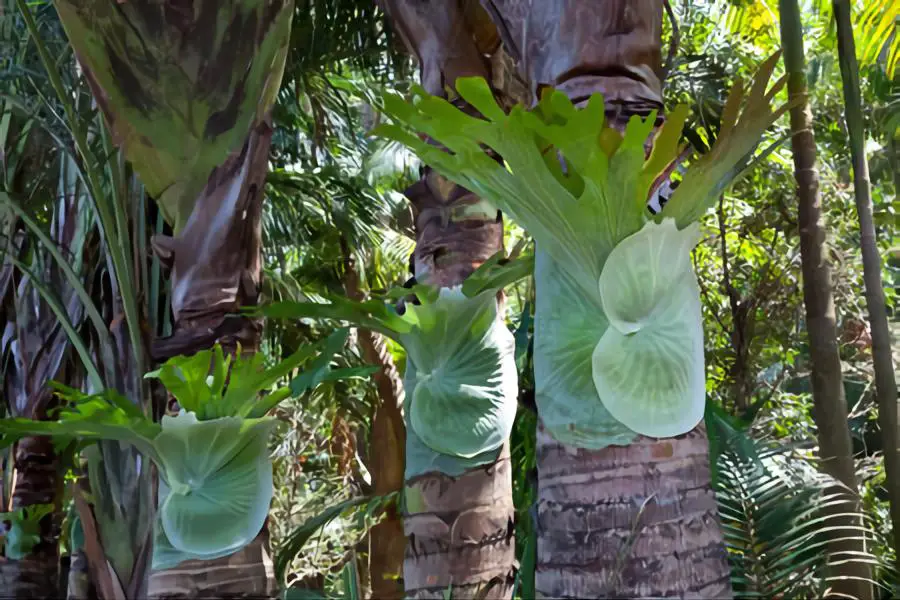Last Updated on April 8, 2024 by Real Men Sow
Staghorn ferns (Platycerium spp.) have an extraordinary appearance. Two types of leaves are available for the plants. One of these looks like the horns of a large herbivore. They can also be grown outdoors in warm-season areas or indoors. Because they are epiphytic (growing in trees), staghorn fern can be grown mounted or in a basket. Staghorn Fern care requires careful light, temperature, and humidity monitoring.
What is the Staghorn Fern
There are 17 species of staghorn ferns (Platycerium Alcicorne), which, in addition to the common staghorn fern name, also go by antelope ears and elkhorn fern. Each species has both antler-like leaves and a flat, basal one. Flat leaves are infertile and become browner and more papery as they age. They can be arranged on a surface to provide support for the fern. Depending on the species of fern, the foliar fronds can droop or be straight.
The spores of Staghorn Ferns are reproductive organs. They are found on the edges and ends of antler-type lobed fronds. They don’t produce flowers and are not usually rooted in soil.
How to Grow the Ferns
It is very easy to grow a staghorn fern. They will thrive if they are given low to moderate light and moderate moisture. You can grow staghorn Ferns indoors and outdoors by providing moderate moisture and a medium rich in humus. For best growth, outdoor plants should be placed in low-light conditions or partial shade. Indoor plants require bright indirect light.
Mounting staghorn ferns on a piece or basket is a common way to grow them. A little mound of compost, peat, or other organic matter should be piled under the plant. The plant should be secured to the medium using either pantyhose or plant strips.
Growing the Fern from Pups
The fern will eventually produce pups, which will grow around the main plant. The best way to plant a new staghorn Fern is from the pups because ferns are not able to produce seeds like other plants. Cut the pup off the parent plant using a sharp, sterilized knife. Then, Wrap the pup in damp sphagnum moss, and tie it to a piece of bark. As you would with an adult fern, staghorn fern requires the same care as adults.
Care of Staghorn Fern
The care of staghorn Ferns depends on controlling temperature, humidity, and light. With proper care, ferns can last many years and may even reach hundreds of pounds in their natural environment. Although they are usually smaller, homegrown ferns can live for many decades.
Care of staghorn fern is important. It requires regular watering but also allows the plant medium time to dry out. You should also fertilize them once a month using a 1:1:1 fertilizer that has been diluted in water. Black spot is a fungal disease that affects the plant. In order to prevent disfiguring spores, don’t water the foliage.


